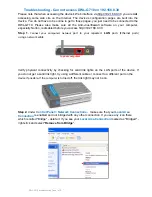
l
If two routes in the route monitoring group go Down, the RM module instructs service
module D to switch services from the primary link to the backup link. If one more route
goes Down, the RM module instructs service module C to perform a primary/backup link
switchover. If five routes go Down, the RM module instructs service module B to perform
a primary/backup link switchover. If the number of routes that go Down reaches eight, the
RM module instructs service module A to perform a primary/backup link switchover.
l
If the number of routes that are Down in the route monitoring group falls below eight, the
RM module instructs service module A to switch services back. If the number of routes
that are Down in the route monitoring group falls below five, the RM module instructs
service module B to switch services back. If the number of routes that are Down in the
route monitoring group falls below three, the RM module instructs service module C to
switch services back. If the number of routes that are Down in the route monitoring group
falls below two, the RM module instructs service module D to switch services back.
Figure 11-1
Route monitoring group
Network side
Access side
BRAS
Route monitoring group
Status management
1 2 3 4
9 10
… ...
Trigger
Service Module
A
Service Module
B
Service Module
C
Service Module
D
11.2 Configuring a Route Monitoring Group
In a dual-device hot backup scenario, you can add network-side routes to a route monitoring
group and associate access-side service modules with it so that the service modules can perform
primary/backup link switchovers upon route changes in the group. This mechanism can prevent
traffic congestion or loss.
Context
To improve network reliability, most carriers implement device-level redundancy by deploying
two devices. The two devices back up each other or share traffic load. If one of the devices fails,
the other device takes over services. Despite the benefit of enhanced network reliability, you
must dual-home other devices to the two devices, which may provoke link reliability and load
balancing issues.
As shown in
, BRAS 2 backs up BRAS 1. NPEs on the user side are dual-homed to
the two BRASs to load-balance traffic, and the two BRASs are connected to routers on the
network side.
HUAWEI NetEngine80E/40E Router
Configuration Guide - IP Routing
11 Route Monitoring Group Configuration
Issue 02 (2014-09-30)
Huawei Proprietary and Confidential
Copyright © Huawei Technologies Co., Ltd.
1264













































